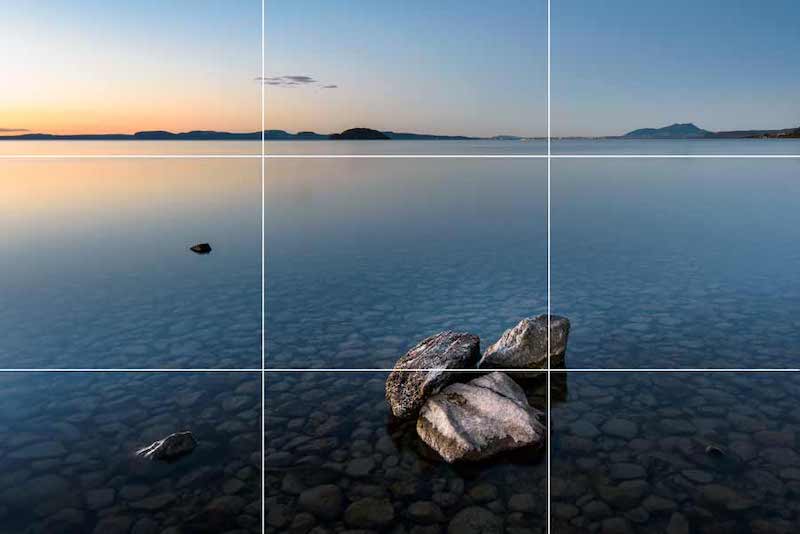
How to Practice Photographic Composition
Amazing photos require a combination of good equipment, lighting, and luck. But, most importantly, awesome images rely on the photographer’s knowledge of photographic composition.
Consistently taking breathtaking pictures is a sign you’ve mastered photographic composition. Understanding contrast, balance, and relevant points of interest are fundamental in exceptional photography. Familiarizing yourself with these elements will bring you great success.
If you’re not content with snapshots and are ready to get serious about photography, you’ve come to the right place. Learning about photographic composition will take you places, so let’s get to it!
What is composition in photography?
The word “composition” might seem vague, however, this makes sense given the breadth of what the term covers. Every aspect of creating a photo, from framing to choosing a subject, falls under the umbrella of photographic composition.
Considering the effects of balance, framing, and lighting are vital steps in shooting amazing photos. After all, photographic composition is exactly that – the art of creating amazing images.
Once you’re actively thinking about composing images before snapping shots, you’ll be taking above-average photos worth going on stock platforms like Depositphotos.com.
This is where you’ll go from picture-taking to practicing real photography. Ultimately, photo composition is an understanding that you’re not capturing a scene; you’re creating a scene.
Photographic composition steps
Photography is an art in which intuition and creativity play a significant part. But photography is also a science in which cold, hard strategy works wonders. Creating a photographic scene requires some key steps.
1. Choose a point of interest
The primary point of interest, also called a subject, is what you’re taking a picture of. In portrait photography, this is pretty straightforward—take a picture of the person in front of your camera. In landscape photography, things aren’t so clear-cut.
Even if your final shot includes multiple objects, it’s a good idea to choose one. Can’t decide on the point of interest? As a rule of thumb, a point of interest should:
- Encapsulate the mood
- Draw attention to itself
- Help balance the shot
- Be in focus
Note that a point of interest doesn’t need to dominate the shot or fill the frame. Instead, treat it as the final destination for the viewer’s eye. It’s the one thing they must see.
2. Use contrast
Nothing makes photographic subjects stand out like contrast. Color and shading differences provide depth to images. Remember to balance light and dark elements. Otherwise, you risk overwhelming the viewer.
Look at photos of the sun, for example. The overwhelming majority of sun photos are taken during sunrise or sunset. The contrast between a dark sky and bright sun makes these images pop. By comparison, a picture of the sun at noon will be disproportionately bright – in other words, a flat scene.
If you’re shooting a portrait, choose a background that juxtaposes the person’s complexion. For landscape photography, shoot images when the sky’s color makes geographic features more noticeable.
3. Balance elements
There’s a reason humans tend to find symmetrical faces more attractive, and this preference applies to photos, too. The Rule of Thirds can be a useful tool for balancing photographic elements.
For example, if you envision a tic-tac-toe grid over your shot (or just enable the grid in camera settings), try placing points of interest near the line interception.
When in doubt, fill the frame. Surround your primary point of interest with relevant elements. If you’re concerned about crowding the shot, use negative space (intentional emptiness) wisely to fill in the gaps.
4. Focus the viewer’s eye
Use points of interest to guide the viewer’s eye to significant parts of a photo. Appropriate visual cues lead viewers through the components of a photograph like a winding road.
The goal is to avoid letting viewers realize they’re being led. To do this, use leading lines and shapes to provide perspective to your photos. For example, a shot taken looking down into a well brings the viewer’s eyes through the photo.
Avoid the common mistake of leading people to the edges of a photo. You want your photographic composition to appear boundless. Don’t prompt people to shift their attention outside the photo because chances are they won’t look back.
5. Change your perspective
Truly spectacular photos don’t use traditional perspectives. Taking a picture of a building from a street at eye level isn’t interesting or unique.
Unique photos require you to get creative with your positioning. Experimenting with perspective changes the impression your subject has on viewers.
Going low with your camera and pointing up makes your subject appear powerful and imposing. Going high and pointing down makes your subject appear small and innocuous.
There are many more ways perspective can change photo composition for the better. Get creative and experiment, and you may get some mind-bending results!
Benefits of editing photos
Digital imaging technology has allowed new levels of utility and creativity. They enable photographers to make corrections, emphasize contrast, or create an image composite.
Editing photos puts artistic control in the photographer’s hands. Thanks to digital image editing software, you can fix lighting issues, lens spots, and backgrounds in post. Editing photos also means that you don’t need to go back to reshoot as often, saving time and fuel.
But the most evident benefit of editing photos is the ability to separate subjects from scenes. A free image background remover makes this easy for anyone to do with just a click.
Such software means you can place your subjects anywhere you choose. The Swiss Alps, a Caribbean beach, or a lunar station are all doable options. Hooray for creative control!
Successful photographers
Practicing photographic composition isn’t super difficult. Successful photographers share strategies that work best. Contrast, balance, focus, and perspective are just a few examples of photography basics.
Learning the methods will, without a doubt, make you a better photographer. So get out there and start taking amazing shots!


